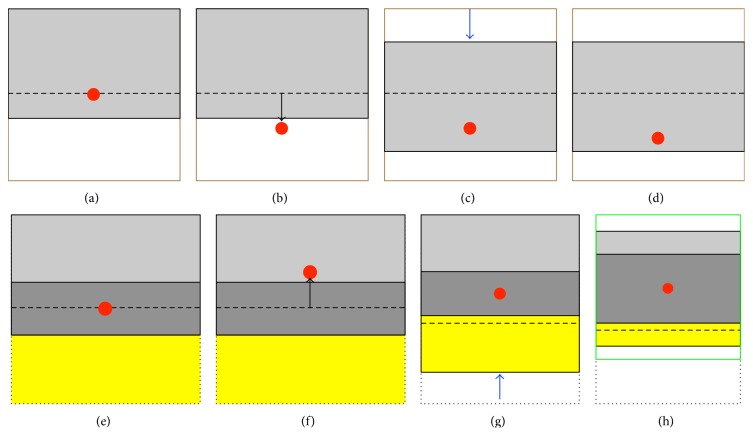Figure 2.
(a) The echo energy peak (indicated by the red dot) is expected to appear at the center of the targeted k-space coverage (enclosed by the solid black and brown lines) for partial-Fourier EPI (with the gray area representing the acquired data). (b) In the presence of an echo-shifting effect, the echo energy peak may be shifted outside the k-space acquisition area, resulting in signal loss (i.e., Type 1 artifact). (c) By using the proposed k-space energy-anchored pulse sequence, the k-space acquisition area (indicated by the gray rectangle) moves along with the eddy current-induced echo-shifting effect, avoiding Type 1 artifacts. (d) Even though the echo-shifting effect corresponding to different voxels within a slice may vary slightly, Type 1 artifacts can still be avoided as long as the echo energy peak remains within the k-space acquisition area. (e) The central k y band (indicated by the dark gray rectangle) can provide phase references to estimate the signals in the omitted region (indicated by a yellow rectangle) in partial-Fourier reconstruction. (f) When the echo energy peak is shifted outside the central k y band (while remaining within the k-space acquisition area), artificial signal elevation (i.e., Type 2 artifact) appears in the reconstructed images. (g) Type 2 artifacts may be reduced or even eliminated in data obtained with the k-space energy-anchored sequence. (h) Because of the spatially dependent echo-shifting effect, the echo energy peaks corresponding to different voxels within a slice may be shifted variably. In this case, the location of the central k y band should be redefined (in postprocessing), according to the spatially dependent echo-shifting effect, to minimize Type 2 artifacts.

